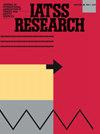Road safety studies at micro, meso, and macroscopic levels: A systematic review
IF 3.3
Q3 TRANSPORTATION
引用次数: 0
Abstract
Traditionally, road safety studies have been conducted independently, either at microscopic or macroscopic levels. This study synthesizes existing literature on road safety research conducted at microscopic, macroscopic, and mesoscopic levels using a Systematic Literature Review (SLR). The objective of this research is to examine the advancement in crash prediction methodologies, crash analysis, and the integration of microscopic, macroscopic, and mesoscopic studies over the past two decades to understand the multiscale dynamics of crash occurrence. In addition, bibliometric analysis helps to map social, conceptual, and intellectual collaborations among sources, authors, and institutions. The comprehensive review of the existing literature shows that some analytical advancements in statistical approaches, as well as Machine Learning (ML) and Deep Learning (DL) approaches, have facilitated them to address data complexity issues. In the latter decade, researchers have started to integrate microscopic and macroscopic approaches to have a nuanced and cohesive understanding of the intrinsic relationships among crash contributing factors and to assess the impact of an integrated approach on the model's predictive performance. The bibliometric analysis of published literature revealed distinct clusters, each providing a unique perspective on road safety. The major gaps observed in the systematic review of studies are the lack of consideration of behavioural aspects of road users, the transferability of models between two independent frameworks, as well as across the integrated modelling methodologies. Another significant gap is the lack of a scale of adjacent street networks in mesoscopic studies. Overall, this review provided critical insights into safety studies that focus on distinct resolutions, analytical advancements in modelling methodologies, mapping of scientific collaborations and identifications of research gaps.
道路安全研究在微观、中观和宏观层面:系统综述
传统上,道路安全研究是在微观或宏观层面独立进行的。本研究采用系统文献综述(SLR)的方法,从微观、宏观和中观三个层面综合了现有的道路安全研究文献。本研究的目的是研究过去二十年来碰撞预测方法、碰撞分析以及微观、宏观和介观研究的整合方面的进展,以了解碰撞发生的多尺度动力学。此外,文献计量学分析有助于绘制来源、作者和机构之间的社会、概念和智力合作。对现有文献的全面回顾表明,统计方法以及机器学习(ML)和深度学习(DL)方法的一些分析性进步有助于他们解决数据复杂性问题。在过去的十年中,研究人员开始将微观和宏观方法结合起来,对坠机因素之间的内在关系有了细致入微的理解,并评估了综合方法对模型预测性能的影响。已发表文献的文献计量学分析揭示了不同的集群,每个集群都提供了道路安全的独特视角。在系统审查研究中观察到的主要差距是没有考虑到道路使用者的行为方面,模型在两个独立框架之间以及在综合建模方法之间的可转移性。另一个重要的差距是在介观研究中缺乏相邻街道网络的规模。总的来说,这篇综述为安全性研究提供了重要的见解,这些研究侧重于不同的解决方案、建模方法的分析进步、科学合作的映射和研究差距的识别。
本文章由计算机程序翻译,如有差异,请以英文原文为准。
求助全文
约1分钟内获得全文
求助全文
来源期刊

IATSS Research
TRANSPORTATION-
CiteScore
6.40
自引率
6.20%
发文量
44
审稿时长
42 weeks
期刊介绍:
First published in 1977 as an international journal sponsored by the International Association of Traffic and Safety Sciences, IATSS Research has contributed to the dissemination of interdisciplinary wisdom on ideal mobility, particularly in Asia. IATSS Research is an international refereed journal providing a platform for the exchange of scientific findings on transportation and safety across a wide range of academic fields, with particular emphasis on the links between scientific findings and practice in society and cultural contexts. IATSS Research welcomes submission of original research articles and reviews that satisfy the following conditions: 1.Relevant to transportation and safety, and the multiple impacts of transportation systems on security, human health, and the environment. 2.Contains important policy and practical implications based on scientific evidence in the applicable academic field. In addition to welcoming general submissions, IATSS Research occasionally plans and publishes special feature sections and special issues composed of invited articles addressing specific topics.
 求助内容:
求助内容: 应助结果提醒方式:
应助结果提醒方式:


